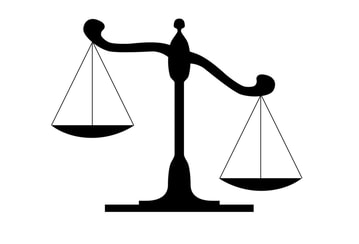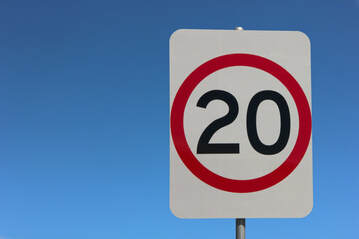|
If you’ve used a freelance editor or proofreader* to help improve something you’ve written, how can you assess the quality and professionalism of their work? (* As in my previous post: to keep things simple, I’ll just use the words ‘editor’, ‘editing’ etc., even though the actual work might be proofreading.) You may not have the time or the expertise to check every detail of what the editor has done (and not done), but there are still some key points that you can consider. Some of these arise before or during the job, but I’ll be mainly focusing on what you should get back from the editor at the end. If you want help with finding an editor in the first place, here’s an earlier article about this. A lot depends on what type of customer you are. Publishing companies usually know what to expect from us, as editorial work is an integral part of their business. Self-publishing authors often aren’t so sure, but this isn’t really my area. So, this article’s main emphasis is on the needs of non-publishing customers, such as businesses and public-sector organisations. I don’t want to be overly prescriptive, as there are different ways to produce good results – but I hope this will be useful as a general guide to what you should look for. For a more detailed breakdown of what an editor should do, you could take a look at the relevant parts of the Chartered Institute of Editing and Proofreading’s code of practice. At all stages, you should expect the editor to behave as a professional service provider – not as a hobbyist or someone who ‘just does a bit of proofreading’. Now let’s go into detail. Before the jobBoth you and your editor should make sure you have a clear agreement on:
This is all part of the process of getting a quote to begin with, as explained in my previous blog post. During the jobWhile the work is in progress, the editor should:
After completionFirst of all, the editor should have stuck to your agreement on the scope of work, level of editing, methods to be used, editorial style and so on. You should find that the resulting text makes sense, at the very least. If appropriate, depending on the level of editing that you agreed on, it also should make for smooth, easy reading, with a professional ‘look and feel’. If you think the editor has missed or created an error, it’s worth considering whether it really is an error. Some things that some people regard as errors are actually just style choices, such as splitting an infinitive, or using ‘they’ in the singular sense. If you’re unsure, you can ask the editor for clarification, or do some research into the current conventions and common usage. It helps if the editor draws your attention to any style decisions that might be contentious, using either comments in the document or a style sheet. Also, they should have ensured consistency in these matters. However, some variations that look like inconsistencies to a non-editorial eye might be perfectly valid. For example, it’s normal practice to use a hyphen in ‘a long-term plan’, but not in ‘for the long term’ (as explained on The Editor's Blog). If the editor has been working on a Word document and using Track Changes, their use of change tracking should be sensible and suited to your needs: neither too little nor too much. Any minor, indisputable changes, such as eliminating double spaces or fixing obvious typos, shouldn’t be tracked unless it’s been agreed that you need to see all changes. On the other hand, any changes that you might need to check, or at least be aware of, should be tracked. The editor should have provided notes and queries where appropriate, expressing them in a clear, concise and helpful way. Any changes that could significantly alter the meaning of the text should be brought to your attention, with notes to explain them and/or queries to ask for your confirmation. This also applies to facts, and to the spelling of the names of people, organisations, products, places and so on. The editor should have taken account of the nature, purpose and tone of your written material, and its target readers. For example, if it’s aimed at readers from a wide range of educational and work backgrounds, the editor shouldn’t have introduced specialist terms or complicated wording. Where appropriate, your editor should have considered how their changes could affect things like the length, layout and appearance of the material. It isn’t all about words – we should think about the overall finished product. Finally, the editor shouldn’t have made rash assumptions about your level of expertise in Word, Adobe Acrobat or whatever software you’ll be using to review and follow up on their work. Because we know how to use things like Track Changes and comments in Word, or the Adobe Acrobat commenting tools, we can easily make the mistake of assuming you know as much about them as we do. We should avoid falling into this trap, and be ready to help you. Helping us to help youHaving said all this, please allow for the occasional slip-up by your editor – we’re only human. Whether or not you think your editor has got everything right, it’s always helpful if you give them some feedback after reviewing their work. We should never take it for granted that we’ve got it all worked out, and we should remember that every customer has different needs. And if you’re thinking of hiring the same editor again in the future, this feedback just might benefit you as well, by helping the editor to get a better understanding of what you need. Have I missed something? If there’s anything else that you expect from an editor, get in touch and let me know.
0 Comments
If you hire a freelancer to edit or proofread your written work, how much will they charge? There’s no simple answer, but there are some things you can do to help make sure you’ll get meaningful quotes. Otherwise, you may get quotes that are higher than they need to be (which means you’ll either overpay, or turn down a suitable editor who could have done the job for less). Or you may run into problems later, as it turns out that your chosen editor has badly underestimated the amount of work needed. Here are some pointers to guide you on your way. By the way, if you’re looking for tips on finding a suitable editor or proofreader in the first place, here's an article I wrote about this a while ago. Key pointsOne of the basic things to agree on is whether you’ll be charged a fixed fee or an hourly rate. Even with a fixed fee, the editor* will probably estimate the number of hours the work will take and multiply this by the hourly rate they want. So, either way, the level of hourly payment that each editor is looking for will be a factor. (* To keep things simple, I’ll just use the words ‘editor’, ‘editing’ etc., even though the actual work might be proofreading.) You’ll also need to give the editor some information to help them gauge how long it will take to do the work. If the fee is going to be a fixed one, this will obviously help to determine it. Even if you’re going to pay by the hour, a rough work estimate will give you some idea of how much you’ll pay and how soon the work can be completed. It’ll also help the editor to judge whether they can fit the job into their schedule. (Yes, I know, some of this is obvious – but I couldn’t really leave it out.) Your own scheduling requirements also might affect the fee or rate that the editor will quote. Now let’s look at this in detail. Fixed fee or hourly rateWhich is it to be? If the scope of the work is fairly clear, a fixed fee is probably in the best interests of both parties, as you’ll know how much money will change hands from the outset. But if there’s some doubt about how much material needs to be edited, an hourly rate might be more sensible. You could try to agree on a limit to the number of hours, and what should happen if, later on, this doesn’t look like being enough for the agreed scope of work. Or, if you’re expecting to give your editor a regular stream of small jobs, agreeing on a fee for each job might mean you’ll both spend too much time discussing quotes (perhaps sometimes delaying the work); and then there’s all the extra invoicing, record-keeping and other paperwork. So, in these cases, using an hourly rate with monthly or quarterly invoicing may be more efficient all round. How much per hour?There is no standard rate. Each editor will have their own desired rate in mind, or perhaps a range of rates for different types of work. A lot will depend on their levels of experience and expertise. The UK-based Chartered Institute of Editing and Proofreading (CIEP) publishes a set of suggested minimum rates, but the words ‘suggested’ and ‘minimum’ are both important here. Helping the editor to estimate the work neededDifferent editors will have different questions to ask, according to the types of work they offer and how they prefer to produce estimates. For example, a fiction editor might want to know which genre your novel fits into. I don’t edit fiction, but I think the factors that I’m about to describe are fairly typical. Crucially, you and the editor both need to have a clear understanding of the type of service that the editor will provide: for example, development editing, copy-editing, plain English editing or proofreading. Some of these terms aren’t commonly understood and are open to interpretation, and you’ll need to make sure you agree on exactly what the editor will do. This will influence how long the work will take; and, as mentioned already, it might affect the hourly rate. As you might expect, the length of the material to be edited is a key factor. If possible, you should tell the editor how many words there will be, at least roughly. A page count isn’t normally very useful by itself, as the editor won’t know how many words an average page will have (and if you do know that, you can calculate the overall word count yourself). Although an approximate word count will do, it should be a genuine estimate based on facts, rather than just a ‘finger in the air’ educated guess. Make sure it includes all the types of content that will need to be edited, not just the main text. If you’re developing the content in Word, it’s easy to see the current word count in your document, or each of your documents. Even if you’re still working on it when you’re looking for a quote, it makes sense to estimate carefully what the final count will be. If you’re looking for someone to edit the written content of your website, getting a word count isn’t straightforward and can take a while. You may well need to create a list of pages (most likely using Excel), then copy the content of each page into Word in turn so that you can see how many words it has, and finally add these counts together. This list will be helpful for the prospective editors you get in touch with, though, especially if it includes the web address of each page. As well as the length of the main text, other types of content can affect the amount of work needed, such as tables, illustrations, notes and references, if they need to be cross-checked with the main text and perhaps with each other. Make sure you tell the editor about these (if you want them to be checked, which is usually wise), and say roughly how many of each will be included. Also, if there are a lot of headings, especially with multiple levels, this will add to the complexity, as will frequent cross-referencing. The type of material also makes a difference, along with its purpose and the target audience. For example, complex technical material generally takes longer to edit, per word, than something that’s been written in simple language for a wide readership. If you need to the editor to follow a particular style guide, they’ll need to spend some time reading it, absorbing it and possibly changing their settings in some editorial software to reflect it. The more complex (and/or quirky) it is, the longer it will take to do the actual editing, because the editor will often need to pause and check that the text complies with it. On the other hand, a good style guide might save time, as the editor won’t need to spend so much time trying to work out your style preferences and, potentially, raising queries about them. The format of the document (usually Word or PDF), and how it should be edited or marked up, usually won’t have a huge impact on the size of the job – at least if you don’t need anything out of the ordinary. But this will need to be agreed in advance anyway, and the editor is likely to bear it in mind when estimating the effort needed. It’s also helpful to agree in advance on whether you’ll want the editor to do any follow-up work after the initial edit – for example, to help with resolving their queries after you’ve answered them. If so, and if you’re going to be charged a fixed fee, an estimate of this work could be factored into the quoted fee; or you could agree that it won’t be included in that fee, but will be billed additionally at an hourly rate. Finally, but crucially, you usually should provide a sample of the content if you possibly can. This needs to be long enough to give the editor a useful impression of what the complete document will be like, particularly the style and quality of writing – perhaps something like 1,000 words. The sample also needs to be typical of the overall content, in terms of the type of language used and how carefully it’s been written and checked. However, a sample might not be necessary if the editor has worked on similar material for you before. Urgency and timingSome editors charge a premium for an urgent job. (Some might call it a ‘rush job’, but that might make you worry about how carefully they’ll do it.) Also, if your timeframe requires the editor to do some of the work at the weekend, on a public holiday or in the evening, they may well charge extra for that portion of it. Wrapping upThis might seem like a lot of information to give to your potential editors, but it’s worth the effort to help make sure you’ll get realistic quotes.
Rather than scrambling for answers each time an editor asks you these questions, why not prepare those answers before you start looking for quotes? You could save time by including this information in your initial query – it’ll be a good way to get a potential working relationship off to a smooth start. Why use short words?In guidelines for ensuring plain, readable English, we’re often advised to prefer simple words. This mostly means preferring shorter words to longer ones, although we shouldn’t take this as an absolute rule. The words also should be well known to our readers. As Ernest Gowers put it in The Complete Plain Words, ‘If the choice is between two words that convey the writer’s meaning equally well, one short and familiar and the other long and unusual, of course the short and familiar should be preferred.’ What makes them short?But what do we mean by ‘short’ words? In written language, the most obvious measure is the number of letters. However, the number of syllables also makes a difference to readability – perhaps even more so. On average, of course, the more letters a word has, the more syllables it has; but there are glaring exceptions. For example, let’s compare two words with similar meanings: area and zone. Both are nice and compact on the page, with just four letters – but area has three syllables, compared with just one in zone. Which is more plain? You could argue that area wins the day because it’s more familiar, but it’s a close call. Here’s a pair of related words with an even bigger contrast: ideas and thoughts. The first word, again, has three times as many syllables as the second, but it has barely half as many letters. And then there’s myopia, which manages to pack four syllables into its six letters – just as many as the much more space-consuming (but better-known) alternative short-sightedness. Why the syllable count mattersWhen we’re reading, most of us ‘say’ the words in our head. The more syllables there are in your writing, the more work your reader will need to do. If there are too many, it will take a long time for them to work through a sentence, and they might struggle to keep a handle on its overall meaning. This, of course, is also an argument for keeping sentences short as well as words. In his Oxford Guide to Plain English, Martin Cutts warns that avoiding multisyllabic words isn’t always a good move, as it often means using more words. But if the syllable count per word is just one of the factors you look at, along with the word count per sentence, you will be dealing with that potential problem. Another useful measure is the number of syllables per sentence, which takes care of both of these factors to some extent. Also, if there are too many single-syllable words, writing can seem monotonous and lacking in ‘colour’, with a staccato effect that might annoy the reader. A lot depends on the type of content and its target readership. For informational material aimed at a wide audience, some studies and guidelines suggest that an average of around 1.5 syllables per word is a good compromise between keeping it plain and keeping the reader awake. Clashing consonantsThe length of a word, whether in terms of letters or syllables, isn’t the only thing that can affect its readability. If it has a cluster of consonants that are all pronounced individually – for example, in instigate, altruism or obstruct – this will slow the reader down as they read the text ‘out loud’ in their head. (This isn’t a problem in a word such as nightshirt – although it has five consonants in a row, they only make two sounds.) Even where there’s only a pair of consonants, they might not go well together pronunciation-wise. This can have a slight jarring effect for the reader: for example, subpart and enmity. TestingIt’s interesting that the best-known readability tests are based on words per sentence and syllables per word, taking no account of the number of letters. Along with the average word count per sentence, the Flesch Reading Ease and Flesch–Kincaid Grade Level measures both use the average syllable count per word, while the Gunning Fog Index checks the percentage of ‘complex’ words. (A ‘complex’ word is defined as one with three or more syllables, excluding proper nouns, familiar jargon and compound terms. Common suffixes such as ‘-ed’ and ‘-ing’ aren’t included in the syllable count.) These measures are only of limited value, especially as they take no account of what the words mean. But perhaps their emphasis on counting syllables is one of their strengths. Summing upThere’s no magic wand that can ensure writing is plain and readable – a lot of factors come into play. But if you’re careful about how many syllables your words have, this will clearly help to make things go smoothly. It’s just one way of doing something that writers and editors should always do: thinking about the reader.
If you contact me about some possible work, what can you expect to happen next? (Please note: this is how I generally work with non-publishing customers. Things are different with publishers, largely because they often have their own procedures and an author is also involved.) First contact I’ll need you to tell me various things about the material that needs to be edited or proofread, and about your needs: please see here. If possible, I’d like to see at least a sample of the content, which should be representative of the rest of it. With the odd exception (we all need a holiday now and then), you can expect a quick initial response, usually within 24 hours during UK business days. Once I’ve got everything I need from you, I’ll assess it. I’ll consider whether I would be the right person to do the work, estimate how long it would take, and work out whether it could fit into my schedule. If I’m willing and able to do it, I’ll quote a fee (or, if appropriate, propose an hourly rate). I’ll also invite you to check my terms and conditions and data protection policy. AgreementIf we agree on the work to be done, the schedule and the pricing, and you’re happy with my terms and conditions, I’ll book the job in my calendar and confirm that I’m planning to do it. Getting startedFirst, I’ll create various documents, typically including a timesheet, checklist and style sheet. The style sheet will be a record of my findings and decisions on various aspects of writing style, such as variable spellings and the use of capitals, hyphens and numbers – all with the aim of making everything consistent and in line with general good practice. This is mainly for my own use, but you might find the final version useful as well. Next, with the help of specialist software, I’ll do some analysis and general checks, usually making some changes to ensure consistency and coherence. If any general concerns or queries crop up at this stage, I’ll get in touch with you. Down to businessThis is where I start reviewing your material in full, word by word, sentence by sentence and paragraph by paragraph. I’ll be checking the spelling, grammar and punctuation. Depending on what we’ve agreed, I might also be making wider improvements: rewording awkward phrasing, reducing repetition, cutting out unnecessary words, ensuring compliance with a chosen style, perhaps changing some wording into plain English, and so on. My main aim is to help the reader as much as I can (within our agreed remit), which will help you to get your message across clearly. At this stage, I’ll mostly leave you in peace to get on with other things. However, I will get in touch if I come across any major problems, or if an issue keeps cropping up and I think an early resolution would help. Depending on the size of the job and how it’s going, I also might give you some updates on progress. As I go along, I’ll add notes and queries for you in the document. Usually, I’ll leave it to you to follow up on the queries after the handover. Or, if we agree this (usually with additional payment involved), you can give me your answers and I’ll amend the document accordingly. Wrapping upAfter finishing the work, I’ll send you the edited or proofread file, and (if relevant) the style sheet and any other useful documents, along with an invoice. If the work has been done in Word, my edits will usually be highlighted using Track Changes, except for small cosmetic changes, such as eliminating double spaces or changing straight quotes to curly ones. I’ll provide notes and comments about anything I think you should be made aware of. If you’re unsure about any of my changes, comments etc., you can feel free to get in touch, and I’ll happily spend some time clearing things up. Any feedback on my work would be very welcome; and I hope you’ll want to work with me again some day. Does this help? If you have any thoughts or questions on how we could work together, please get in touch.
Over on LinkedIn, I’ve been posting some little tips on pitfalls to avoid in your writing, as a series of posts with the hashtag #WhatNotToWrite. A while ago, I packaged up the first five into this handy blog post. Now, here comes a round-up of numbers 6 to 10 (with some minor edits). The tips are mainly geared towards business writing, and are largely based on things I’ve noticed when editing business content – but some are worth bearing in mind when doing other types of writing as well. Here we go, then … 6️⃣ Don’t use a hyphen in a phrasal verb such as ‘set up’, ‘check in’ or ‘rule out’. A phrasal verb is usually a pair of words that represent ‘doing’ something: first a verb, then a preposition or adverb such as ‘in’ or ‘up’. I’ve noticed this kind of thing a lot lately: ❌ Please log-in to your account. ❌ Sign-up for our newsletter! ❌ She mapped-out the way ahead. Each of these hyphens is an unnecessary distraction, making the text more cluttered than it needs to be. Use a space instead, and the meaning will still be clear. The same applies when using a similar phrase as an adjective that comes after a noun, for example: ❌ The customer was logged-in at the time. ❌ The data is fully backed-up. ❌ The formation was more spread-out. But it’s different if you use this kind of phrase as a noun, or an adjective preceding a noun: ✅ There was a mix-up in the orders. ✅ Please go to the check-in desk. ✅ They used a more spread-out formation. Here, the hyphen clarifies which words belong together, and how they fit into the sentence structure. Sometimes, though, especially in US English, it’s normal to use a single word such as ‘login’ or ‘setup’. Rule of thumb: cut out (but don’t ‘cut-out’) the clutter when you can. On LinkedIn 7️⃣ Don’t write words that you wouldn’t normally say out loud, unless you’re sure there’s a good reason. A few examples: ❌ circa ❌ moreover ❌ notwithstanding OK, so people do sometimes say ‘circa’ together with a year: for example, ‘circa 1980’. But have you ever heard anyone say that a company has ‘circa 200 employees’? Probably not, but I often see this in business reports. The trouble is that this kind of wording will make your writing appear stiff, stilted and unnatural. Your readers might well be jolted for a moment when they ‘hear’ one of these words in their head as they read it. Anything that would make them stop in their tracks – even for a split second – is best avoided, as it would distract them from the message you’re trying to get across. There’s always a more familiar, natural-sounding alternative: ▶ circa → about, around, roughly, approximately ▶ moreover → and, also, additionally ▶ notwithstanding → despite, in spite of So, why not use one of these instead? There might be times when those not-so-familiar words are appropriate because of the level of formality that’s needed. Unless you feel sure that this is the case, though, I suggest you steer clear of them. On LinkedIn 8️⃣ Don’t write a hyphen in an adjectival compound (that’s a pair of words used as an adjective) if the first word is an adverb ending in ‘ly’. Like this: ❌ the newly-formed company ❌ a widely-used method ❌ her carefully-written letter This isn’t an absolute rule, but it’s a common convention that makes good sense. Hyphens do have their uses. If the first word in an adjectival compound is itself an adjective, things can get confusing without a hyphen. It’s clear what a ‘black-cab driver’ is, but what exactly is a ‘black cab driver’? But if they’re used where they’re not helpful, they’re just clutter, making the writing look ‘fussy’. With adverbs ending in ‘ly’, I think it’s safe to say that there’s never any ambiguity without a hyphen: ✅ the newly formed company ✅ a widely used method ✅ her carefully written letter In the first case, for example, we can’t be saying a ‘formed company’ is ‘newly’ – it wouldn’t mean anything. We clearly mean the ‘company’ is ‘newly formed’. A hyphen would just be a minor distraction, and we’re better off without it. However, some adverbs don’t end in ‘ly’, such as ‘well’. These tend to be used differently, so this guideline doesn’t usually apply to them – this is a grey area, though … On LinkedIn 9️⃣ Don’t write ‘as well as’ when you just mean ‘and’. An example: ❌❓ The company has a head office in London as well as regional offices in Birmingham and Leeds. Now, I’ve flagged this with ❌❓ because it might be OK. If we expect the reader to be aware of the Birmingham and Leeds offices already, this is a conventional use of ‘as well as’, so there’s no problem. But if that information is new to the reader, they’ll be wondering, ‘Should I already know about Birmingham and Leeds?’ I suspect that people tend to do this when they think ‘and’ would make for awkward reading, like it does here: ❓ The company has a head office in London and regional offices in Birmingham and Leeds. This isn’t wrong, but it isn’t ideal either, as the double use of ‘and’ might cloud the meaning slightly. There are other fixes, though: you can add a comma before the first ‘and’, or use something like ‘along with’ or ‘together with’ instead (with or without a comma): ✔ The company has a head office in London, and regional offices in Birmingham and Leeds. ✔ The company has a head office in London along with regional offices in Birmingham and Leeds. ✔ The company has a head office in London, along with regional offices in Birmingham and Leeds. Some reference sources say ‘as well as’ can mean the same thing as ‘and’. But why confuse your readers by using an expression with a double meaning? On LinkedIn 1️⃣0️⃣ Don’t use three-letter codes for currencies in normal sentences (unless you're required to do so, or there's a compelling reason for it). I’ve seen this kind of thing in business writing:
❌ a turnover of USD 3 million ❌ a GBP500 fee This is like writing ‘a flight to LHR’ when you mean a flight to Heathrow Airport. It gives the reader too much work to do. They’ll probably read these pieces of text as ‘U S D three million’ and ‘a G B P five hundred fee’. Nobody would say those things out loud, so they’ll ‘sound’ odd in the reader’s head. It’s better to stick with convention: ✔ a turnover of $3 million ✔ a £500 fee People will read these as ‘three million dollars’ and ‘a five hundred pound fee’. As the format is so familiar, they’ll be used to interpreting it that way. If you need to clarify which country’s dollars they are, you could initially use ‘US$’, ‘C$’ etc. But this isn’t much more readable, and should only be done sparingly. Or you could put ‘US’, ‘Canadian’ etc. in brackets after the amount – this might not disrupt the flow so much. OK, so these codes can be useful in stored data, and in tables, graphs etc. – but they don't work well in normal text. Likewise for two-letter country codes: in normal text, it’s far better to write ‘Germany and Japan’ than ‘DE and JP’ – another dubious notation that I’ve come across lately. On LinkedIn (Updated in November 2020) Do you want your organisation’s written material to make a big impact on customers and inspire confidence in your brand? If you do, it needs to be consistent, strike the right tone and reflect what you’re all about. An editorial style guide can help with this. Why would you need a style guide?The chances are that your organisation produces written material of some sort, such as:
A style guide can help you to project a strong, coherent identity, with a consistent ‘look and feel’ to all this material, so it will get your message across smoothly. It can shape the style and tone of the writing, so it will resonate with your target readers. If a number of people are involved in the writing and editing, or it’s done over a long period, there’s a bigger risk of inconsistencies creeping in. A documented house style, with someone to enforce it, can help to iron them out. (A note for clarity: Style guides can also cover visual style, such as typefaces, colouring and page layouts. But here I’m just dealing with editorial style: that is, the use of words, numbers and punctuation.) What is a style guide?It’s a set of guidelines, detailing an organisation’s preferences about various aspects of writing. Many features of spelling, grammar, punctuation and so on aren’t governed by cast-iron ‘rules’. Instead, they have various conventions – or style choices – and you can decide which ones suit you best. Here are some points that a typical style guide might deal with:
Publishers of books, magazines and newspapers typically have style guides, as do many other organisations, both private and public. When would you use it?IdeaIly, the people who write the content in the first place should follow your style guide. In reality, though, they can easily get caught up in what they’re writing, and not pay enough attention to how they’re writing it. So, once the writing has been done, it’s time for an editor or proofreader to check it. This is where your house style should be applied more faithfully, so that you’ll make the most of it. How can you get one?You could write it yourself, but input from a professional editor or writer would be very useful. With the expertise they’ve built up from years of working on written material all day, they can keep your style guide in line with common conventions and good practice. They can also help you to tailor it to suit the purpose of your written material, and to its audience. Alternatively, you could hire an editor or writer to create a draft version for you, which you could then review and change as you see fit. They could look through some of your existing material, identify your preferences, and pick out areas of inconsistency and potential improvement. Then they could put all this together to make a clear, well-organised set of guidelines to help ensure a smooth, consistent style in the future. Keeping it flexibleYour style guide could have separate sections for various types of content that you produce. For example, you’ll probably need a different style for business reports than for promotional leaflets. Also, writing for the web and writing for printed material have different needs. And if you’re running an international operation, different forms of English, and perhaps different styles of writing, might best suit your various markets. To learn more ...The Chartered Institute of Editing and Proofreading (CIEP) has published a useful booklet, Your House Style: Styling your words for maximum impact, about the value of a style guide and how to create one. You can get it in printed or PDF form from the CiEP’s website here. (An earlier version of this article was published on LinkedIn in October 2018.)
The ICC Cricket World Cup gets under way in England and Wales soon. What better time to ponder some of the stranger parts of the grand old game’s vocabulary? agricultural shotA crude swipe of the bat, moving across the line of the ball – possibly taking a chunk out of the pitch in the process, hence the agriculture link. chin musicA term also used in baseball, meaning a delivery that whistles past the batsman’s head at an alarmingly close distance. chinamanA delivery from a left-arm wrist spin bowler that pitches on a right-handed batsman’s off side (that is, to the bowler’s left side) and turns to the leg side; or vice versa for a left-handed batsman. Also known as left-arm unorthodox bowling. It’s thought to be named after Ellis ‘Puss’ Achong, a West Indies bowler of Chinese heritage who was an early exponent of it. In a 1933 Test at Old Trafford, as England’s Walter Robins was on his way back to the pavilion after Achong had had him stumped, he reportedly said, ‘Fancy being done by a bloody Chinaman.’ Other reports suggest the term was already in use long before then. It may have been based on the stereotypical view of the Chinese as being devious. Also, the general use of word Chinaman is widely considered derogatory. These factors might explain why the cricketing term isn’t so common in these (slightly) more enlightened times as it once was. cow cornerThe area of the field between midwicket and wide long on – in other words, on the batsman’s leg side but quite some distance ahead. As it’s relatively unusual for shots to be played into this area, it’s been suggested that cows could safely graze there. When someone does manage to slog the ball in that direction, this is known as a cow shot. death oversThe closing overs of an innings in a limited-overs match. Some bowlers are specialists in this phase of play, when the priority is usually to restrict scoring rather than to take wickets. dibbly-dobblyA unflattering term for slow-to-medium-paced bowling that doesn’t cause batsmen many problems. doosraA relatively new form of finger spin bowling, in which the ball turns in the opposite direction to what is expected. A doosra from a right-arm bowler pitches on a right-handed batsman’s leg side and turn to their off side, and vice versa for a left-arm bowler. (And, of course, double vice versa for a left-handed batsman.) Pakistan’s Saqlain Mushtaq is credited with inventing the doosra in the 1990s. The term comes from a Hindi, Punjabi and Urdu word meaning ‘the second (other) one’. googlyYet another type of deceptive spin delivery. Like the chinaman, it’s a wrist spin delivery that pitches on a right-handed batsman’s off side and turns to the leg side, which isn’t what they would usually expect; but it’s produced by a right-arm bowler. Nobody seems to be sure where the word originated from. One theory is that it came about because the batsman ‘goggles’ in amazement over where the ball has ended up. Googly itself is also an adjective describing unfocused or rolling eyes. gullyA fielding position just outside the slip cordon, nearly level with the batsman. The name is derived from the narrow channel between the slips and the point position. I’d like to think that someone once caught Sourav Ganguly at gully off a googly, but sadly I can’t prove it. king pairA batsman’s unwanted feat of being dismissed for nought on their first ball (that’s a golden duck) in both innings of a match. Also known as a golden pair. A mere pair is when the batsman is out for no runs in both innings (just a duck), regardless of the number of balls faced. maidenAn over where no runs are scored. The idea is that the bowling is ‘untouched’, like a traditionally virginal maiden (to paraphrase Madonna). mankadingThe controversial act of a bowler running out the batsman at the non-striking end, by stopping the run-up and breaking the wicket while the latter is backing up – that is, straying from the crease in order to get a head-start on a possible run (or through absent-mindedness). It’s named after India all-rounder Vinoo Mankad, who dismissed Australia’s Bill Brown this way in a 1947 Sydney test. Whether it’s legal or not, mankading provokes heated debate over whether it’s within the all-important ‘spirit of the game’. Since a law change in 2011, it can only happen if the bowler hasn’t yet started their delivery stride. There have been some recent high-profile mankadings, though, notably when Ravichandran Ashwin of Kings XI Punjab trapped Jos Buttler of Rajasthan Royals in an Indian Premier League match. It’s feared that a spate of them could sour relations in this year’s World Cup. NelsonA score of 111 by either a team or a batsman, which is thought to be unlucky. Why Nelson? Well, Admiral Horatio Nelson supposedly ended his days with one arm, one eye and one leg (he didn’t, but let’s not worry about that). nurdlingAnother marvellously evocative piece of lingo (see also dibbly-dobbly), meaning a gentle prodding of the ball by the batsman into a nearby gap in the field. Often preceded by ‘nudging and’. pie-chuckerA close relative of dibbly-dobbly. It means a purveyor of slowish, innocuous bowling, where the ball’s movement resembles that of a hurled pie. Not intended as a compliment. Just a thought, though: how easily could a batsman hit an actual pie to the boundary? rabbitA lower-order batsman who is notoriously easy to dismiss. A rabbit needs to be a specialist bowler (or astounding wicketkeeper) to merit a place in the team. Also known as a bunny or walking wicket. A batsman who’s even worse than a rabbit might be called a ferret or weasel: out in the wild, a ferret or weasel always goes in after the rabbits (geddit?). The term rabbit or bunny is also often used for a batsman who has often been dismissed by a particular bowler – for example, ‘Mike Atherton was Glenn McGrath’s bunny.’ silly mid-offA fielding position on the batsman’s off side. The silliness lies in the fielder’s close proximity to the batman, putting him in danger of being walloped by a well-hit ball. See also silly mid-on, silly midwicket and silly point (not here, though). wicketThe slightly strange thing about wicket is that it can mean so many things. Here we go: 1. Each set of stumps and bails at either end of the pitch – that is, the prepared strip of ground in the middle of the field. (To add to the confusion for newcomers, the field itself is often referred to as the pitch. Speaking of which …) 2. The pitch. People tend to call it the wicket when discussing its condition, hence sticky wicket. 3. The taking of a wicket is the dismissal of a batsman: ‘New Zealand soon took another wicket.’ 4. The other side of that coin is a batsman losing his wicket (being dismissed), or a team losing wickets. See also wicketkeeper, midwicket, wicket maiden, last-wicket stand and so on. Have I forgotten any good ones? If you think so, please get in touch ...
Writing numbers – that’s simple, isn’t it? You just use those keys from 1 to 0 near the top of the keyboard, or that number pad on the right. If only it were that simple. Very often, it’s better to use words instead of numerals. If you’re writing for someone else, they might expect you use words in some situations. As with so many things in the world of writing, this is mainly about style choices – and adapting your style to suit the type of material, its purpose, its context and its target audience. The ‘what’First, we need to consider what kind of number we’re writing, and what it refers to …
The ‘why’So, what’s the point in all this variation? And how do we, or the people we’re writing or editing for, choose a style? These aren’t just arbitrary rules. Words work better in some contexts, numerals in others. They each have their advantages and drawbacks. Why use words?
Why use numerals?
In fiction, numbers tend to be used less, and to be less significant, than in non-fiction writing. And, in a book that’s going to be read for pleasure rather than out of necessity, it’s important to make the pages look appealing. This means minimising things that might ‘jump off the page’ and have a jarring effect – including numerals – if they’re to be used at all. So, it’s common for most, or even all, types of numbers to appear in word format. The same applies to the more creative, literary end of the non-fiction spectrum. The reader should be allowed to get swept along in the narrative, with the visual aspects of the book giving them as few jolts as possible. However, it’s a different story with writing that revolves around hard facts, such as business, technical or instructional material, and sometimes (depending on the subject) in academic or educational content as well. Here, numbers often play a big role in getting the message across, and there’s nothing wrong with making them stand out. You might well want the reader to absorb the numbers quickly, and perhaps compare or contrast them with each other. Making the pages look pretty is less of a priority. In tables, charts and diagrams, especially, numerals make a stronger impact than words. Odds and endsIn almost any kind of writing, a number that acts as an identifier is usually written in numerals – for example, the number of a chapter in a book, or of a house on a named street. It’s generally agreed that we should avoid starting a sentence with one or more numerals. This can look a bit odd, and in some contexts, the number might be mistaken for a section or paragraph reference. There are some grey areas, a common one being where numbers above and below the words-to-numerals limit are used close together and in a closely related way. For example: ‘Their children were aged nine and 11.’ This can look a bit odd and jarring, and some style guides recommend choosing one style for both or all of the numbers – but others suggest that it isn’t enough of a problem to warrant breaking the usual rule. And there are other related style issues that I won’t go into here, just to keep this thing fairly brief: commas in numbers above 999 (‘2,485’ vs ‘2485’), ordinal numbers (‘5th’ vs ‘fifth’), elision (‘341–5’, ‘341–45’ or ‘341–345’), dates, times, money amounts, percentages, sport scores, phone numbers. Mind how you goIt’s worth paying attention to the way you write numbers: it makes a difference to the readability and impact power of the material you’re writing. There are no universally ‘right’ or ‘wrong’ ways, but following sensible guidelines can help you get the right balance between clarity and ease of reading – according to what you’re writing, who you’re writing it for, and why.
Over on LinkedIn, I’ve been posting some little tips on pitfalls to avoid in your writing, as a series of posts with the hashtag #WhatNotToWrite. And I thought it seemed like a good idea to package up the first five into a handy blog post – so here it is. The tips are mainly geared towards business writing, and are based on things I’ve noticed when editing business content – but some are worth bearing in mind when doing other types of writing as well. Here we go, then … 1️⃣ Don’t use words and expressions like ‘current’, ‘currently’ and ‘at this time’ unless they help in some way. It’s easy to pad out your business writing with this kind of thing, almost without thinking. But is it worth it? Remember that every word gives your readers a bit of work to do. If they keep having to wade through pointless verbiage, chances are they’ll become bored, frustrated and tempted to look elsewhere. I once edited a report where 0.5 per cent of the words (127) were ‘current’ or ‘currently’. Hardly any of them were useful. If you’re contrasting the present state of something with its previous state, or a potential future state, it makes sense to use this kind of wording for emphasis. Otherwise, it’s a waste of space, and of your readers’ time. Let’s look at these statements, for example: ▶ The company currently employs around 100 staff. ▶ There are no plans to expand the service at this time. If we delete ‘currently’ and ‘at this time’, will this affect the meaning or clarity? The verbs make it obvious that these statements are about the present time. ❓ If in doubt, ask yourself this question: does it help me to get my message across? If the answer’s no, get rid of it. On LinkedIn 2️⃣ Don’t use ‘etc.’ at the end of a list that’s introduced by something like ‘for example’ or ‘such as’. Like this: ▶ It is used for functions such as finance, payroll, HR etc. The words ‘such as’ make it clear that the list is incomplete – you don’t need to ram the point home with ‘etc.’ This will do nicely instead: ▶ It is used for functions such as finance, payroll and HR. OK, so it’s only a few characters, and you need to insert ‘and’ if you leave 'etc.' out. In the reader’s head, though, it’s four syllables: et-cet-e-ra. Also, this kind of extra wording can make your writing seem bloated and clumsy, and give the impression that you haven’t really thought it through. You could omit the ‘such as’ (or whatever) instead – but ‘etc.’ has its drawbacks anyway. Abbreviations can look untidy, and can make the reader stumble. Also, as ‘etc.’ often has a full stop (though this is a style choice), it might be unclear whether it’s the end of a sentence, depending on how the next word begins. Instead, you could use something like ‘and so on’ or ‘and others’. But it’s often better to make it clear at the start that you’re giving a partial list. As ever: if it doesn’t help the reader, cut it out. ✂ On LinkedIn 3️⃣ Don’t automatically write ‘then’ after an ‘if …’ condition. Here’s an example: ▶ If you follow this advice, it will improve your writing. ▶ If you follow this advice, then it will improve your writing. Does the ‘then’ help in any way? Does it make the meaning clearer? I don’t think so. I’m not saying it’s wrong, or that you should never use it. But it’s unnecessary, it disrupts the flow of the sentence, and it’ll make your writing repetitive and tedious if it appears often. It does have its uses, though. Sometimes, a ‘then’ helps to guide the reader through a long, complex sentence. Sometimes it helps with emphasis, or with adding some variety to your wording. It also makes good sense when there’s a sequence of events, for example: ▶ If this issue is resolved, then we can begin to make progress. Mostly, though, you and your readers are better off without it. And you should never use ‘then’ if the conditional part begins with something like ‘when’, ‘where’ or ‘unless’ – that really would just look plain wrong. On LinkedIn 4️⃣ Don’t write ‘in case’ when you mean ‘if’ or ‘in the event of’. This normally means something is being done as a precaution. For example, compare these sentences: ▶ If it rains, I’ll take an umbrella. ▶ In case it rains, I’ll take an umbrella. The first means I’ll check the weather, and if it’s raining, I’ll take an umbrella. The second means I’ll definitely take one – as a precaution in case it rains later. I also sometimes come across things like this: ▶ In case of a system failure, data will be restored from backups. But this means it’ll be regularly restored from backups, as a precaution against a possible failure, which wouldn’t be a good idea. These are better: ▶ In the event of a system failure, data will be restored from backups. ▶ If the system fails, data will be restored from backups. The following is fine, though: ▶ In case of a system failure, data is backed up each day. The Oxford online dictionary says ‘in case’ can mean ‘in the event of’. For US English, the Merriam-Webster one says it can mean ‘if’. But, to avoid confusion, why not use those words instead? On LinkedIn 5️⃣ Don’t write ‘one of the only’. Here’s an example: ▶ She was one of the only people there. What’s the problem? Well, it doesn’t tell us much. How many people were there? Three, 20, a million? However many there were, it would still be true to say she was one of the only ones. When people use this expression, what they almost certainly mean is ‘one of the few’, like this: ▶ She was one of the few people there. Admittedly, most readers will probably understand the intended meaning, so it isn’t a huge problem. But some might well find it jarring as they notice the vagueness and ambiguity of the wording. That won’t help if you want them to focus on your message, and not be distracted by things like this. So, if you mean ‘one of the few’, why not write that instead? That way, you can’t go wrong. On LinkedIn More coming soon, I hope ...
The Society for Editors and Proofreaders (SfEP) is 30 years old on 26 November. [Update: In March 2020, the SfEP became the Chartered Institute of Editing and Proofreading (CIEP) after being granted a royal charter.] What is the SfEP and what is it for?It’s a membership organisation for professional editors and proofreaders, both freelance and in-house. It’s based in the UK, but also has many members elsewhere. For its members, the SfEP provides great opportunities for learning and networking. Those who are at Professional Member or Advanced Professional Member level also can advertise their services on the SfEP Directory. It doesn’t exist only for our benefit, though. A key part of its aims is to maintain and improve standards in editing and proofreading, largely through training courses, tests, guides, our Code of Practice and the membership upgrade process. This helps to make sure our customers will benefit from reliable, thoroughly professional services. In the beginning …When the organisation was formed back in 1988 – led by the late Norma Whitcombe along with other key founders such as Michèle Clarke – it was called the Society of Freelance Copy-editors and Proofreaders. The ‘copy-’ was soon dropped, bringing about the initials ‘SFEP’. In 2001, the ‘Freelance’ part was also jettisoned, as in-house staff were now also welcome. In a suitably neat bit of rewording, the ‘of’ became ‘for’, so that the SFEP could become the SfEP. Over 60 people attended the inaugural meeting in London, and the membership would grow to around ten times that number in just the next couple of years. There are now over 2,000 members. Modern timesI’m a relative newcomer, having joined in late 2012, when I was looking into editing and proofreading as a possible career change (I went full-time a year later). I was lucky to join just as the current online forum system was being launched, replacing a system of Yahoo! groups and mailing lists that, apparently, hadn’t been working out especially well. I soon dived into the forums, which became hugely valuable to me in those early years, and still are today. The organisation had matured in various ways by then. It had become incorporated as a limited company in 2003; its directors form the SfEP Council. The members’ meeting of the early days had evolved into an annual conference as early as 1990, and local groups had sprung up around the UK. The four-page ‘News-sheet’ had become a bi-monthly magazine: first as CopyRight, later as Editing Matters. The SfEP also now had a website (the first version having been launched in 1997), an office in London, training courses, mentoring schemes, an accreditation test and a set of guides. Over the six years that I’ve been a member, there have been other developments: a blog, a growing social media presence (you can find us on Twitter, Facebook and LinkedIn), and a series of mini-conferences for regions and specialist types of work. The Society’s international presence has blossomed as well: there’s now even a thriving local group in Toronto, and a mini-conference was held there this year. Although it’s difficult to back this up with hard facts, it seems to me – and to some other members I’ve spoken to – that the make-up of the SfEP has changed noticeably in the last few years. It seemed to be largely centred around people with in-house experience of the publishing world, and this was reflected in the Society’s communications, training courses and so on, which were largely geared towards working with publishers. Now, though, my impression is that members from other backgrounds are more prominent than before: working on the SfEP Council, running local groups, presenting conference sessions, leading discussions on the forums and so on. I think this gives us a richer, wider variety of expertise, viewpoints and ideas than we had before, which can only be a good thing. (This is meant with great respect to the people from publishing backgrounds who helped to launch the SfEP and get it to where it is today, and to those who still play a part.) It also helps us to focus on a wider range of customers, especially non-publishing businesses and public-sector organisations that can benefit from our skills. Where would I be?Being in the SfEP has been a godsend for me as I’ve embarked on my career change. Without the help I’ve had from colleagues on the forums and in local groups, the training courses, the mentoring schemes and the online directory, I can’t imagine how I could have become established as an editor and proofreader.
It’s easy to forget that the SfEP essentially is its members – not an agency that we just sign up to and expect results from. It depends on its members (along with the marvellous office team) to make it work, and to make it useful for us. I’m glad to have played a small part, with two-year spells as a forum moderator and as the Manchester local group coordinator; I’ve now joined a new team that’s looking to improve and expand the Society’s information resources. But I’m in awe of those who’ve made much greater contributions – especially back in those pre-web days, when it must have entailed a lot of paperwork, phone calls and trips to the postbox (or even post office). We 21st-century editors really don’t know we’re born. And I can imagine how daunting it must have been for those who’d been working on paper for decades when they had to get up to speed with the digital revolution – but surely most would agree that it has made our work, our communication with customers, our networking and the running of the SfEP much easier. Now, we face the challenge of keeping up with further developments in technology and business models, and how they’re reshaping the publishing industry and the wider world of work. By facing it together – sharing our knowledge, expertise and ideas as we always do – we’re giving ourselves a good chance. So, it’s happy 30th to the SfEP. Long may it run. |
Thoughts on Words
An editorial blog. Posts by Graham Hughes. Archives
July 2024
Categories |













